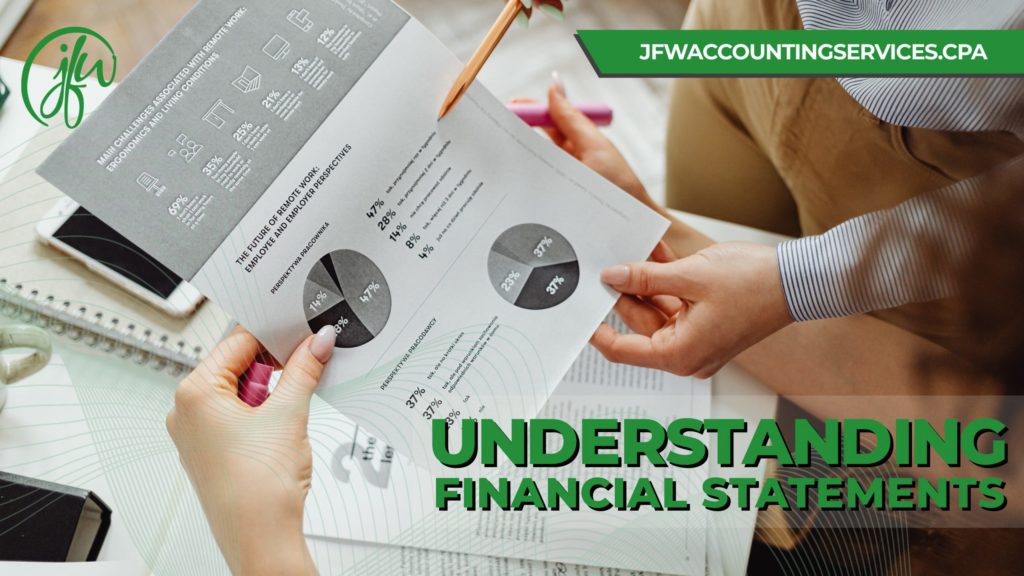Unavoidably, financial statement reporting is a necessary part of doing business. Accurate reporting allows you to see how your business is doing and what areas need attention. For nonprofit organizations, they allow you to manage cash and provide documentation to outside agencies and supporters.
Looking at finances may feel like reading a foreign language. Just start at the top and work your way down. The financial statement heading will tell you what kind of report you are looking at. The information below will help you understand the content.
How to Read a Balance Sheet
A balance sheet is sometimes called a statement of financial position. It is an accounting statement that focuses on the assets, liabilities, and owner’s equity of the organization. It is unique because all other standard financial reports cover a certain time period, but the balance sheet gives a snapshot of a certain date.
The assets show what the company has, or owns, and appear first. Assets are listed in order of liquidity, or how easily they are turned into cash. Current assets, or those that can be converted to cash within one year, will be at the top of the balance sheet and may include cash, investments, and accounts receivables. Long-term, or fixed, assets will appear next and may include furniture, buildings, and land. For nonprofit organizations, assets may also be categorized on the balance sheet by those that have donor restrictions and those that don’t.
Next liabilities are listed, which tell what an organization owes. Current liabilities are those that are expected to be paid in the next year and may include accounts payable, payroll, and unearned revenue. Long-term liabilities, like mortgages, will be listed next on the balance sheet.
The difference between the assets and liabilities gives you the last section of the balance sheet: owner’s equity. This section tells the value of the company. For this financial accounting statement to be in balance the assets must equal the sum of the liabilities and the owner’s equity. For nonprofit organizations, there may also be restrictions noted on certain equities.
How to Read an Income Statement
An income statement, or statement of activities, is also referred to as the profit and loss (P&L) statement for a business. This statement gives us net Income, for a given time period. The sections on an income statement are revenue and expenses.
Revenue is the money an organization brings in, and expenses account for the money that goes out. In a for-profit company, revenue comes from sales, services, or other goods. In a nonprofit organization, most of the revenue is collected from contributions, fees, and grants. Expenses are listed below the revenue and show the costs of doing business.
The difference between revenues and expenses gives us profit. The profit is called net income, which is a commonly requested figure in financial statement reporting. In a nonprofit organization, the profit must be put back into the business and used to serve the organization’s mission.
How to Read a Cash Flow Statement

The cash flow statement shows changes in cash over time. It shows how much cash is being used to run the business, during the given time period. It breaks cash transactions into three categories: operating, investing, and financing.
The operating section of the cash flow statement tracks the cash flowing in and out for ordinary operations, like revenue and payroll expenses. The investing portion shows the flow of cash related to activities like equipment. The financing portion shows activity related to stocks, shares, and debt. This report is important to all businesses, but especially for nonprofits because it can show exactly how donations were used.
How to Read an Annual Report
The annual report gives detailed information about an organization’s activities throughout the year. In for-profit companies, the report is usually intended to be used by investors to evaluate the business. It often contains a letter from the CEO, financial report details, and information about the business activities.
The annual report is an important report for nonprofits, although it is not a required report, because it is used to inspire and inform current and new supporters about the mission of the organization. It shares details of how the organization is fulfilling its vision as well as summarizing important financial details.
Final Thoughts
Asking yourself, “what are financial statements in accounting,” sounds like a rabbit hole, but it is not so complicated. Financial reports give both internal and external users vital information about an organization. The balance sheet shows what an organization is worth, the income statement shows how much it makes, the cash flow statement shows where the money flows to and from, and the annual report pulls it all together and adds the “why.”
There are many resources available online if you need help understanding your financial reports. And you can always reach out to advisory services at JFW Accounting Services to help you read, review, or compile your financial reports.

Jo-Anne Williams Barnes, is a Certified Public Accountant (CPA) and Chartered Global Management Accountant (CGMA) holding a Master’s of Science in Accounting (MSA) and a Master’s in Business Administration (MBA). Additionally, she holds a Bachelor of Science (BS) in Accounting from the University of Baltimore and is a seasoned accounting professional with several years of experience in the field of managing financial records for non-profits, small, medium, and large businesses. Jo-Anne is a certified Sage Intacct Accounting and Implementation Specialist, a certified QuickBooks ProAdvisor, an AICPA Not-for-Profit Certificate II holder, and Standard for Excellence Licensed Consultant. Additionally, Jo-Anne is a member of American Institute of Certified Public Accountant (AICPA), Maryland Association of Certified Public Accountants (MACPA), and Greater Washington Society of Certified Public Accountants (GWSCPA) where she continues to keep abreast on the latest industry trends and changes.

